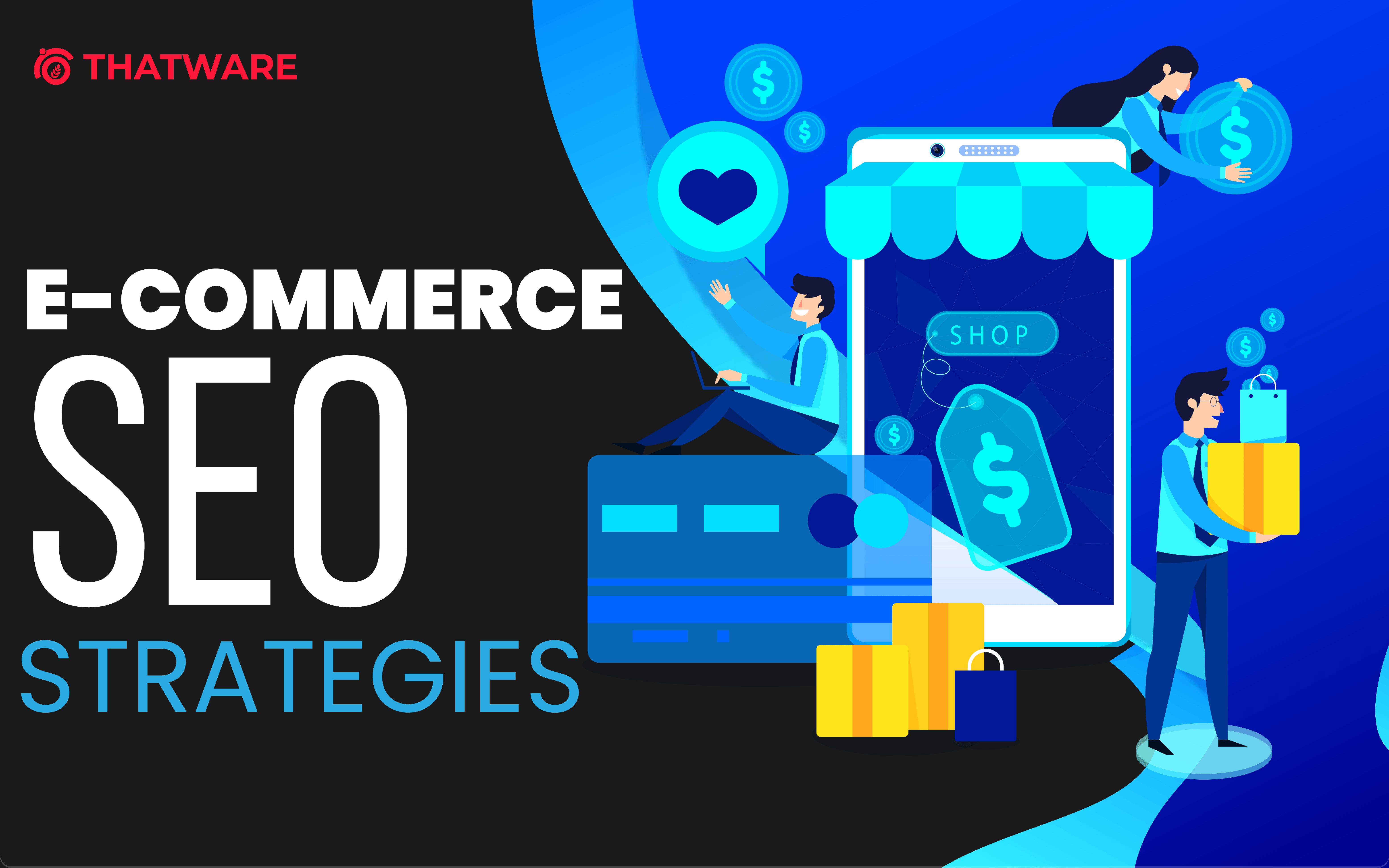Ecommerce SEO Strategies: Boost Your Online Store's Visibility And Drive More Sales
Listen up, shop owners and digital marketers! If you're looking to dominate the online retail space, mastering eCommerce SEO strategies is a must. In today's competitive digital landscape, having a killer SEO game can make or break your business. Think of it as the secret sauce that turns random visitors into loyal customers.
Now, here's the deal: just setting up an online store isn't enough anymore. You need to arm yourself with the right knowledge and tools to rank higher in search engines and attract the right kind of traffic. That's where eCommerce SEO comes into play. It's like giving your store a turbo boost, making sure your products are seen by the people who actually want them.
So, buckle up because we're diving deep into the world of eCommerce SEO. By the end of this article, you'll have a solid understanding of what it takes to outrank your competitors and turn your online store into a sales powerhouse. Let's get to it!
- Denzel Washington Oscars Wins The Iconic Journey Of A Legendary Actor
- Has Laura Ingraham Ever Married A Deep Dive Into Her Personal Life And Career
Before we dive into the nitty-gritty, let's lay out the roadmap for this journey. Here's what we'll cover:
- Understanding eCommerce SEO
- Keyword Research for eCommerce
- On-Page SEO Strategies
- Technical SEO Essentials
- Content Marketing for eCommerce
- Local SEO for eCommerce
- Mobile Optimization
- User Experience (UX) Factors
- Link Building for eCommerce
- Tracking and Analyzing Performance
Understanding eCommerce SEO
Alright, let's start with the basics. eCommerce SEO is all about optimizing your online store so it ranks higher in search engine results pages (SERPs). It's not just about stuffing keywords into your product descriptions, though. It's about creating a seamless shopping experience that keeps both search engines and shoppers happy.
Think of it this way: when someone searches for "best wireless headphones," you want your product to show up on the first page of Google. But it's not just about showing up—it's about converting those clicks into sales. And that's where a solid eCommerce SEO strategy comes in.
- West Reading Christmas Tree Farm Your Ultimate Holiday Destination
- Gia Model The Rising Star In The World Of Fashion
So, what makes eCommerce SEO different from regular SEO? Well, for starters, you're dealing with products that need to be optimized individually. Each product page is like its own mini-website, and each one needs to be optimized for the right keywords, images, and descriptions.
Why eCommerce SEO Matters
Here's the deal: over 90% of online experiences start with a search engine. If your store isn't optimized for search, you're missing out on a ton of potential customers. Plus, with the rise of voice search and mobile shopping, the rules of the game are constantly changing. Staying ahead of the curve is crucial if you want to stay relevant.
And let's not forget about the competition. In 2023, the global eCommerce market is expected to reach $7.4 trillion. That's a lot of online stores vying for the same customers. Without a strong SEO strategy, it's easy to get lost in the crowd.
Keyword Research for eCommerce
Now, let's talk about the backbone of any good SEO strategy: keyword research. This is where you figure out what people are actually searching for when they're looking for products like yours. It's not just about guessing—it's about using data to make informed decisions.
There are a few tools you can use to kickstart your keyword research. Google Keyword Planner, Ahrefs, and SEMrush are all great options. They'll help you identify high-traffic keywords, low-competition keywords, and long-tail keywords that can drive targeted traffic to your store.
Tips for Effective Keyword Research
- Focus on product-specific keywords: Instead of targeting broad terms like "shoes," go for something more specific like "red leather sneakers."
- Use long-tail keywords: These are phrases with three or more words that are more likely to convert. For example, "best wireless headphones for working out."
- Don't forget about branded keywords: If your brand has a strong following, make sure to optimize for branded terms as well.
On-Page SEO Strategies
Once you've got your keywords sorted, it's time to dive into on-page SEO. This is where you optimize individual pages of your store to rank better in search results. And no, it's not just about stuffing keywords into your content.
On-page SEO includes everything from optimizing product titles and descriptions to using alt tags for images and creating compelling meta descriptions. Each element plays a role in helping search engines understand what your page is about and how relevant it is to a user's query.
Key Elements of On-Page SEO
- Title Tags: These are the headlines that appear in search results. Make sure they're descriptive and include your target keyword.
- Meta Descriptions: Think of these as your store's elevator pitch. They should entice users to click through to your site.
- Header Tags: Use H1, H2, and H3 tags to structure your content and make it easy to read.
- Alt Tags: These help search engines understand what your images are about. Plus, they're great for accessibility.
Technical SEO Essentials
Alright, let's talk tech. Technical SEO is all about making sure your store is set up for success behind the scenes. This includes things like site speed, mobile-friendliness, and proper indexing. If your store is slow or hard to navigate, it's going to hurt your rankings—and your bottom line.
Google loves fast-loading websites, so make sure your store is optimized for speed. Use tools like Google PageSpeed Insights to identify areas for improvement. And don't forget about mobile optimization—over 50% of online traffic comes from mobile devices, so you can't afford to ignore this.
Must-Have Technical SEO Features
- SSL Certificate: This encrypts data between your site and users, making it more secure.
- XML Sitemap: Helps search engines crawl and index your site more efficiently.
- 301 Redirects: Use these to redirect old URLs to new ones, preserving your SEO juice.
Content Marketing for eCommerce
Now, here's a secret: content marketing isn't just for blogs. It's also a powerful tool for eCommerce stores. By creating valuable content that solves your customers' problems, you can attract more traffic and build trust with your audience.
Think about it: if someone lands on your site looking for "how to choose the best wireless headphones," and you have a detailed guide that answers all their questions, they're more likely to trust your recommendations—and buy your products.
Types of Content to Create
- Product reviews and comparisons
- How-to guides and tutorials
- Customer testimonials and success stories
- Seasonal guides and gift ideas
Local SEO for eCommerce
Even if you're selling online, local SEO can still play a big role in your strategy. By optimizing for local search terms, you can attract customers who are looking for products in your area. Think about someone searching for "best coffee shop near me" or "wireless headphones in Los Angeles."
Claiming your Google My Business listing is a great place to start. Make sure your business information is up-to-date and include relevant keywords in your description. And don't forget about local directories and review sites like Yelp and TripAdvisor.
Why Local SEO Matters
Here's the thing: local searches often lead to immediate purchases. If someone is searching for a product in their area, they're likely ready to buy. By showing up in local search results, you can tap into this high-intent traffic and drive more sales.
Mobile Optimization
Let's talk mobile. In 2023, over 50% of online traffic comes from mobile devices. If your store isn't optimized for mobile, you're losing out on a huge chunk of potential customers. And Google knows it—mobile-first indexing means your site's mobile version is what search engines use to rank your pages.
So, what can you do? Make sure your site is responsive, meaning it adapts to different screen sizes. Use large, easy-to-tap buttons and keep your navigation simple. And don't forget about site speed—mobile users are notoriously impatient.
Mobile Optimization Tips
- Use a responsive design framework
- Optimize images for faster loading
- Simplify your checkout process
- Test your site on different devices
User Experience (UX) Factors
User experience (UX) is a big deal when it comes to eCommerce SEO. If your site is hard to navigate or takes forever to load, users are going to bounce—and that's bad news for your rankings. Google uses metrics like bounce rate and time on site to determine how relevant your pages are to users' queries.
So, how can you improve your UX? Start by simplifying your navigation. Make it easy for users to find what they're looking for. Use clear calls-to-action (CTAs) and reduce the number of steps in your checkout process. And don't forget about visual design—your site should look good on both desktop and mobile.
Key UX Elements to Focus On
- Fast page load times
- Easy-to-use navigation
- Compelling product images and videos
- Clear and concise product descriptions
Link Building for eCommerce
Link building is one of the most important ranking factors in SEO. It's all about getting other websites to link back to yours, which signals to search engines that your content is valuable. But here's the catch: not all links are created equal.
Focus on building high-quality, relevant backlinks from trusted websites. Guest blogging, partnerships, and influencer marketing are all great ways to build your link profile. And don't forget about internal linking—linking to other pages on your site can help distribute SEO juice and keep users engaged.
Effective Link Building Strategies
- Guest blogging on industry-relevant sites
- Partnering with influencers and brands
- Creating shareable content like infographics
- Optimizing your product reviews for backlinks
Tracking and Analyzing Performance
Now, let's talk about measuring your success. Without proper tracking and analysis, it's hard to know if your eCommerce SEO strategies are paying off. Use tools like Google Analytics and Google Search Console to monitor your site's performance.
Track metrics like organic traffic, bounce rate, conversion rate, and average session duration. These will give you a clear picture of how well your SEO efforts are working. And don't forget to set up conversion tracking—this will help you see which keywords and pages are driving the most sales.
Key Metrics to Monitor
- Organic traffic
- Bounce rate
- Conversion rate
- Average session duration
- Keyword rankings
And there you have it! A comprehensive guide to eCommerce SEO strategies that will help you dominate the online retail space. Remember, SEO is a marathon, not a sprint. It takes time and effort to see results, but the payoff is worth it.
So, what are you waiting for? Start implementing these strategies today and watch your online store grow. And don't forget to leave a comment or share this article if you found it helpful. Happy optimizing!



Detail Author:
- Name : Neoma Beahan
- Username : mikel.von
- Email : swift.michael@mckenzie.com
- Birthdate : 1981-12-06
- Address : 572 Nettie Loaf West Linnea, MT 26318-8362
- Phone : (925) 501-5840
- Company : Murazik Ltd
- Job : Special Forces Officer
- Bio : Veniam odit qui blanditiis natus consectetur. Qui asperiores praesentium consequatur qui iste praesentium. Voluptates qui quam sit illo qui maxime in. Aut quae dolor est vel quaerat minima.
Socials
linkedin:
- url : https://linkedin.com/in/merl.bradtke
- username : merl.bradtke
- bio : Voluptatem atque hic a inventore et occaecati.
- followers : 1915
- following : 965
facebook:
- url : https://facebook.com/bradtke2025
- username : bradtke2025
- bio : Natus placeat quibusdam velit ut qui ducimus.
- followers : 1189
- following : 952
tiktok:
- url : https://tiktok.com/@merlbradtke
- username : merlbradtke
- bio : Voluptatem consectetur et neque consequatur voluptates exercitationem sunt.
- followers : 3263
- following : 1596
instagram:
- url : https://instagram.com/mbradtke
- username : mbradtke
- bio : Doloremque animi dignissimos maxime molestiae. Autem sit libero et aut et.
- followers : 4285
- following : 755